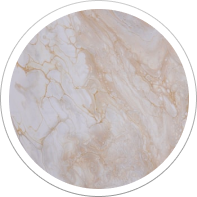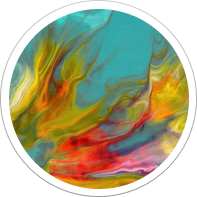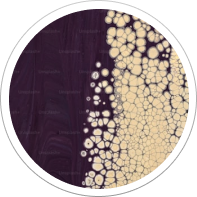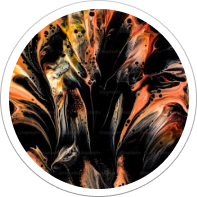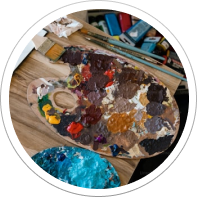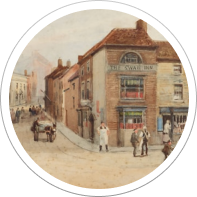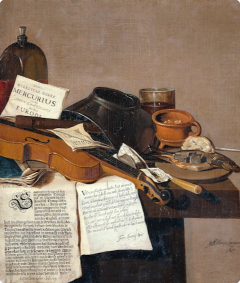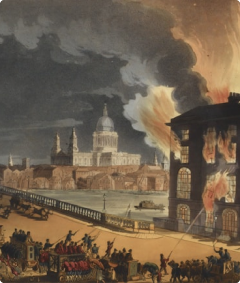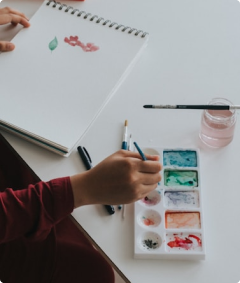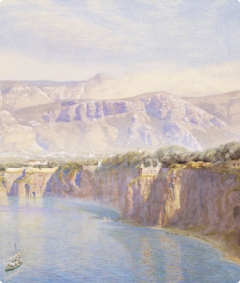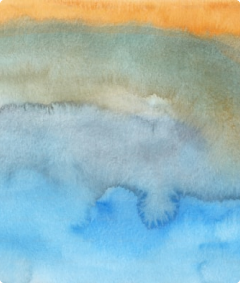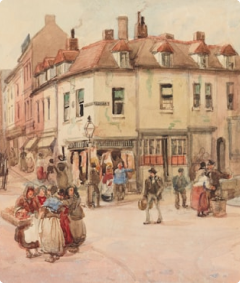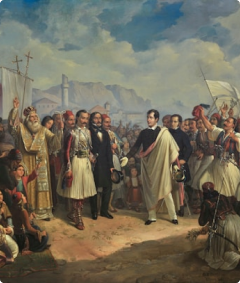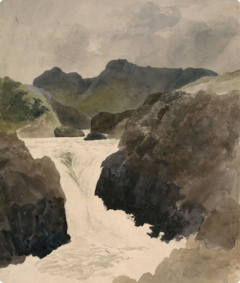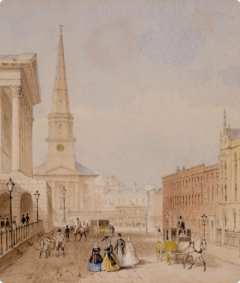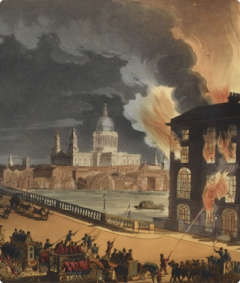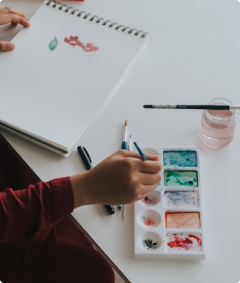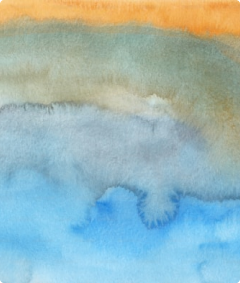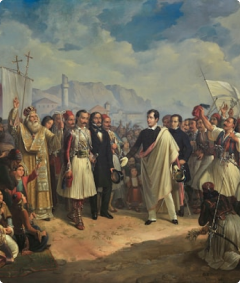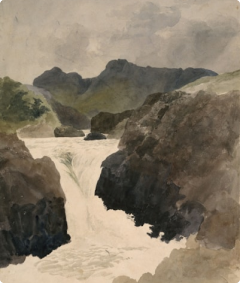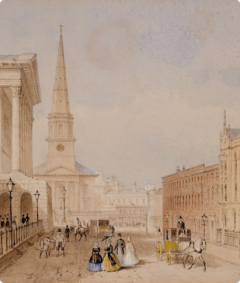
Top Seller
Canvas Prints & Photo Tiles, Wall Art from Jodello
Transform your space with Jodello’s canvas prints, photo tiles, and custom wall art. Turn memories and designs into stunning decor that reflects your unique style.
Get Started
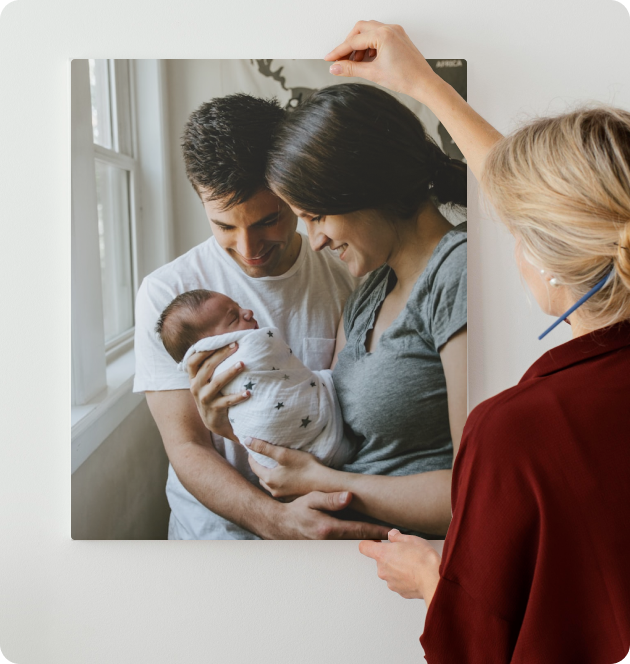






How It Works:
Transform your space with Jodello’s canvas prints, photo tiles, and custom wall art.

1. Add Photos
Upload your favorite moments.

2. We Deliver
Get your custom prints fast.

3. You Stick
Peel, stick, and transform your walls effortlessly.

Featured Categories

Your Cherished Moments, Beautifully Displayed
Transform your space with top-quality, customizable canvas prints. From cherished moments to stunning artwork, Jodello offers a seamless way to craft beautiful pieces that showcase your unique taste.
Get Started
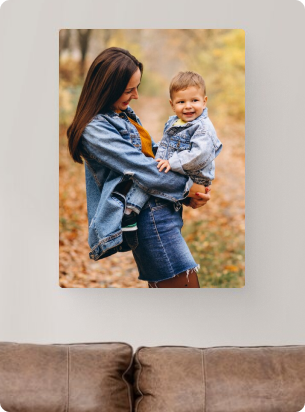
Why You'll Love Jodello

Seamless Installation
Easy-to-mount prints, no tools needed

No Damage, No Hassle
Sticks securely, removes cleanly

Endlessly Customizable
Designs that fit your style effortlessly
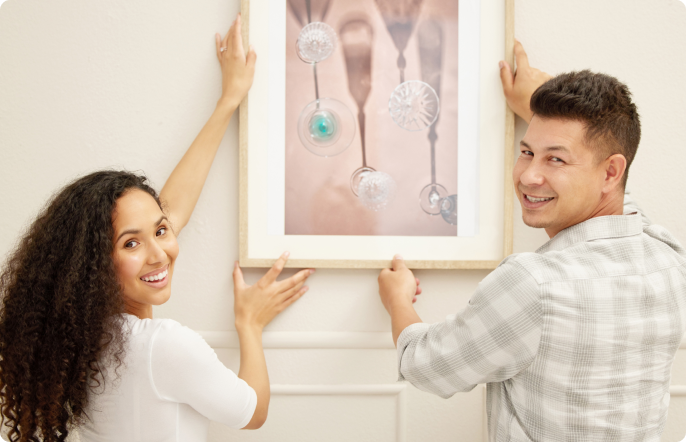
Customer Testimonials
Discover the conversations happening around our brand and see what our customers are saying about their experiences with us.
"I recently purchased a stunning canvas from Jodello, and I couldn't be happier with my choice! The vibrant colors and exquisite detail have truly transformed my living room. “


Liam Carter
"I recently purchased a stunning canvas from Jodello, and I couldn't be happier with my choice! The vibrant colors and exquisite detail have truly transformed my living room. “


Liam Carter
"I recently purchased a stunning canvas from Jodello, and I couldn't be happier with my choice! The vibrant colors and exquisite detail have truly transformed my living room. “


Liam Carter
FAQs
Easy-to-mount prints, no tools needed
Easy-to-mount prints, no tools needed
Easy-to-mount prints, no tools needed
Easy-to-mount prints, no tools needed
Easy-to-mount prints, no tools needed
Easy-to-mount prints, no tools needed
Easy-to-mount prints, no tools needed
Easy-to-mount prints, no tools needed
Cheap Canvas Wall Art & Photo Prints vs Framed Prints: Choosing Your Perfect Display Medium
When embarking on the journey of showcasing your artistic creations, the selection of the appropriate display medium becomes paramount in determining how your audience perceives and appreciates your visual narratives. The eternal debate between canvas wall art and framed prints represents more than merely aesthetic preferences; it encompasses considerations of durability, artistic integrity, environmental factors, and the profound emotional impact your artwork will have on viewers.
This comprehensive exploration delves deep into the intricacies of both display mediums, examining their unique characteristics, benefits, limitations, and ideal applications. Whether you're an emerging artist seeking to establish your presence in the art world or an experienced creator looking to refine your presentation approach, understanding these fundamental differences will empower you to make informed decisions that enhance your artistic vision.
The world of wall art presentation has evolved significantly over centuries, with each medium offering distinct advantages that cater to different artistic expressions and environmental requirements. Canvas wall art brings forth a contemporary, dimensional approach that emphasizes texture and visual depth, while framed prints maintain a timeless elegance that has graced galleries and homes for generations.
Understanding Canvas Wall Art Fundamentals
Canvas wall art represents a revolutionary approach to displaying artistic works that emphasizes the natural texture and dimensional qualities inherent in the medium itself. This presentation method involves printing your designs onto high-quality canvas material, which is subsequently stretched over a sturdy wooden framework, creating a three-dimensional display that extends beyond the traditional flat presentation of conventional prints.
The canvas material itself possesses unique characteristics that interact with printed designs in fascinating ways. The woven texture of canvas creates subtle variations in how light reflects off the surface, adding depth and visual interest that cannot be replicated through smooth paper surfaces. This textural quality becomes particularly pronounced when viewing the artwork from different angles, as the canvas weave creates micro-shadows and highlights that change with the observer's perspective.
The stretching process represents a crucial aspect of canvas wall art creation that directly impacts the final presentation quality. Professional stretching ensures that the canvas maintains proper tension across the entire surface, preventing sagging or warping that could compromise the visual integrity of your artwork. The wooden framework, typically constructed from kiln-dried pine or similar materials, provides the structural foundation that keeps the canvas taut while remaining lightweight enough for easy mounting.
Canvas wall art excels in environments where visual impact takes precedence over protection from environmental factors. The exposed nature of the canvas surface allows for maximum color saturation and texture appreciation, making it ideal for contemporary spaces that embrace bold, statement-making artwork. The absence of glass or protective glazing means that viewers can appreciate the full dimensionality and texture of the canvas without any barrier between them and the artwork.
The printing process for canvas wall art utilizes specialized techniques that ensure optimal color reproduction and longevity. High-quality canvas prints employ pigment-based inks that penetrate the canvas fibers, creating permanent color bonds that resist fading and maintain vibrancy over extended periods. This printing method also allows for exceptional detail reproduction, capturing subtle gradations and fine elements that might be lost in other printing processes.
Canvas wall art offers remarkable versatility in sizing options, accommodating everything from intimate small-scale pieces to dramatic large-format installations. The structural integrity of properly stretched canvas allows for substantial dimensions without requiring additional support structures, making it possible to create impactful displays that command attention in any space.
The mounting system for canvas wall art typically involves simple hanging hardware attached to the wooden framework, allowing for easy installation without requiring specialized tools or expertise. This accessibility makes canvas prints particularly appealing for both temporary displays and permanent installations, as they can be easily relocated or repositioned as needed.
Exploring Framed Print Characteristics
Framed prints represent the quintessential approach to artwork display, combining protective functionality with aesthetic enhancement to create presentations that have stood the test of time across centuries of artistic tradition. This medium involves printing your designs onto premium paper substrates before encasing them within protective frames that shield the artwork from environmental hazards while providing structural support and visual enhancement.
The paper selection process for framed prints plays a crucial role in determining the final appearance and longevity of your artwork. Fine art papers range from smooth, glossy surfaces that enhance color vibrancy and detail sharpness to textured papers that add subtle dimensional qualities reminiscent of traditional painting surfaces. Each paper type interacts differently with various printing techniques, allowing for precise control over the final aesthetic outcome.
The framing process itself represents an art form that requires careful consideration of proportions, materials, and protective elements. Professional framing involves precise measurement and cutting to ensure perfect alignment between the artwork, matting materials, and frame components. The selection of appropriate matting, when utilized, creates visual breathing space around the artwork while providing additional protection against environmental contaminants.
Protective glazing represents one of the most significant advantages of framed prints, offering comprehensive protection against ultraviolet radiation, moisture, dust, and physical damage. Modern glazing options include various types of glass and acrylic materials, each offering different levels of protection and visual clarity. Anti-reflective coatings minimize glare and reflections that could interfere with artwork viewing, while UV-filtering properties help preserve color integrity over decades of display.
The frame material selection process encompasses a vast array of options, from traditional wooden frames that offer warmth and natural beauty to contemporary metal frames that provide sleek, modern aesthetics. Each material choice influences not only the visual appearance of the final presentation but also factors such as weight, durability, and environmental resistance. High-quality frame materials undergo treatment processes that prevent warping, cracking, or deterioration over time.
Framed prints excel in environments where long-term preservation takes precedence alongside aesthetic presentation. The enclosed nature of framed displays protects artwork from airborne contaminants, humidity fluctuations, and accidental contact that could damage unprotected surfaces. This protective quality makes framed prints particularly suitable for high-traffic areas, commercial spaces, and locations with challenging environmental conditions.
The visual presentation of framed prints offers unparalleled versatility through customizable matting options that can dramatically alter the perceived impact and focus of your artwork. Matting colors, textures, and widths can be selected to complement or contrast with the artwork, creating visual emphasis or subtle enhancement as desired. Multiple mat layers can add sophisticated depth and visual interest while maintaining the protective benefits of proper framing.
Framed prints accommodate various hanging and display systems, from traditional wire hanging to modern gallery rail systems that allow for easy repositioning and rearrangement. The protective frame structure also enables stacking and storage options that preserve artwork quality during transport or temporary storage periods.
Artistic Style Compatibility Analysis
The compatibility between your artistic style and display medium significantly influences the effectiveness of your visual communication and the emotional response your artwork evokes in viewers. Understanding how different artistic approaches interact with canvas and framed presentations enables more strategic decision-making that enhances rather than diminishes your creative expression.
Abstract and contemporary artworks often find their ideal expression through canvas wall art, where the textural qualities of the medium complement the experimental nature of modern artistic movements. The dimensional aspects of stretched canvas create visual depth that enhances color interactions and spatial relationships within abstract compositions. Bold color fields gain additional vibrancy when presented on canvas, as the textured surface creates subtle variations in light reflection that add visual interest without overwhelming the primary design elements.
Realistic and photographic artworks present different considerations when choosing between canvas and framed presentations. High-detail photographic reproductions benefit from the smooth, precise surface of fine art papers used in framed prints, where every nuance and subtle gradation can be accurately reproduced without interference from canvas texture. However, painterly photographs or digitally manipulated images may gain artistic credibility and visual impact when presented on canvas, as the texture adds an organic quality that bridges the gap between photography and traditional painting.
Minimalist and geometric artworks require careful consideration of how the display medium affects the perceived precision and intentionality of clean lines and simple forms. Canvas presentation can soften hard edges slightly due to the texture, which may be desirable for certain minimalist approaches but counterproductive for precise geometric compositions. Framed prints with their crisp, protected surfaces maintain the integrity of sharp lines and clean transitions that are essential to many minimalist and geometric art forms.
Traditional and classical artistic styles often align naturally with framed presentation, as this display method carries historical associations with museum and gallery presentations that reinforce the legitimacy and significance of traditional artistic approaches. The formal presentation of framed artwork creates psychological associations with established art institutions, lending credibility and gravitas to classical compositions and techniques.
Mixed media and collage artworks present unique challenges and opportunities depending on the chosen display medium. Canvas presentation can unify disparate elements within mixed media compositions by providing a consistent textural foundation, while framed presentation allows for precise color reproduction that may be essential for works incorporating various materials and textures that need accurate representation.
Illustration and graphic design work often benefits from the precision and color accuracy available through framed prints, particularly when the artwork contains text elements, fine details, or corporate branding that requires exact color matching. However, illustrative works with painterly qualities or textural elements may gain artistic legitimacy and visual appeal when presented on canvas, elevating them from commercial graphics to fine art presentations.
The scale and viewing distance of your artwork also influence the optimal display medium choice. Large-scale works intended for viewing from a distance may benefit from the bold presence and dimensional quality of canvas presentation, while smaller, detail-oriented pieces designed for intimate viewing may require the precision and protection offered by framed prints to ensure optimal appreciation of intricate elements.
Environmental Considerations and Placement
The environmental conditions where your artwork will be displayed play a crucial role in determining the most appropriate presentation medium, as different display methods offer varying levels of protection and durability under diverse conditions. Understanding these environmental factors enables informed decision-making that ensures long-term preservation and optimal viewing experiences.
Humidity levels represent one of the most significant environmental factors affecting artwork longevity and presentation quality. Canvas wall art, with its exposed surface, remains more susceptible to humidity fluctuations that can cause expansion and contraction of both the canvas material and wooden framework. High humidity environments may cause canvas to slacken, while extremely dry conditions can lead to excessive tension that may damage the canvas fibers or cause cracking in printed surfaces.
Framed prints offer superior protection against humidity variations through their enclosed presentation system. The protective glazing creates a barrier that moderates humidity exposure to the artwork itself, while proper framing techniques include moisture barriers and ventilation systems that prevent condensation buildup within the frame assembly. This protection makes framed prints ideal for bathrooms, kitchens, and other high-humidity environments where canvas presentations might suffer damage.
Direct sunlight exposure presents challenges for both display mediums, though each responds differently to ultraviolet radiation and heat buildup. Canvas wall art absorbs heat directly, which can accelerate fading and cause thermal expansion that affects the tension and stability of the canvas surface. The dark wooden framework also absorbs heat, potentially causing warping or splitting in extreme conditions.
Framed prints benefit from UV-filtering glazing options that significantly reduce harmful radiation exposure while maintaining visual clarity. The protective glazing also creates an insulating barrier that moderates temperature fluctuations affecting the artwork itself. However, framed presentations can create greenhouse effects if improperly ventilated, trapping heat and moisture that could damage the artwork or cause condensation problems.
High-traffic areas present different challenges for each display medium, particularly regarding physical protection and maintenance requirements. Canvas wall art, with its exposed surface, remains vulnerable to accidental contact, dust accumulation, and potential damage from cleaning activities. The textured canvas surface can trap dust and particles that are difficult to remove without specialized cleaning techniques.
Framed prints excel in high-traffic environments due to their protective glazing that shields the artwork from contact while simplifying cleaning and maintenance procedures. The smooth glazing surface can be easily cleaned with standard glass cleaning products, maintaining optimal viewing clarity without risk of damage to the underlying artwork.
Air quality considerations affect both display mediums differently, with pollutants, cooking vapors, and airborne particles posing varying levels of risk depending on the presentation method. Canvas presentations absorb airborne contaminants directly into the canvas fibers, potentially causing permanent staining or discoloration that cannot be reversed through conventional cleaning methods.
The protective environment created by proper framing shields artwork from airborne contaminants while allowing for controlled ventilation that prevents stagnation without exposing the artwork to harmful substances. This protection proves particularly valuable in urban environments with poor air quality or in commercial spaces where cooking, manufacturing, or other activities generate airborne particles.
Durability and Longevity Factors
The longevity of your artwork presentation depends heavily on the inherent durability characteristics of the chosen display medium, manufacturing quality, and environmental factors that affect material degradation over time. Understanding these durability factors enables informed decisions that protect your artistic investment while ensuring optimal presentation quality throughout the artwork's lifespan.
Canvas wall art durability depends primarily on the quality of the canvas material, printing inks, and stretching framework used in the manufacturing process. High-quality canvas materials, such as cotton or cotton-polyester blends, offer superior dimensional stability and resistance to deterioration compared to synthetic alternatives. The weave density and fiber treatment processes also influence long-term durability, with tighter weaves and properly treated fibers providing better resistance to stretching, sagging, and environmental damage.
The wooden framework supporting canvas presentations requires careful selection and treatment to ensure long-term structural integrity. Kiln-dried hardwoods offer superior dimensional stability compared to softwoods or inadequately dried materials that may warp, split, or shrink over time. Proper treatment with moisture barriers and protective coatings helps prevent insect damage, rot, and other degradation that could compromise the structural support system.
Printing ink quality represents a critical factor in canvas wall art longevity, with pigment-based inks offering superior fade resistance and color stability compared to dye-based alternatives. Archival-quality inks undergo rigorous testing to ensure color consistency over decades of exposure to normal environmental conditions. The ink penetration depth into canvas fibers also affects durability, with properly absorbed inks showing greater resistance to surface abrasion and environmental damage.
Framed print durability benefits from the comprehensive protection provided by proper framing materials and techniques. The enclosed environment created by quality framing dramatically reduces exposure to environmental factors that cause artwork degradation, including UV radiation, humidity fluctuations, airborne contaminants, and physical damage risks.
The paper substrate quality in framed prints significantly influences long-term preservation outcomes. Acid-free papers manufactured with archival standards offer exceptional longevity, with properly stored and displayed examples maintaining quality for centuries. The chemical composition of the paper, including lignin content and pH levels, determines resistance to yellowing, brittleness, and other age-related deterioration processes.
Protective glazing materials continue to evolve, with modern options offering enhanced UV filtering, impact resistance, and optical clarity compared to traditional glass alternatives. Museum-quality glazing can filter up to 99% of harmful UV radiation while maintaining perfect color transmission, significantly extending the lifespan of displayed artwork. Acrylic glazing options provide impact resistance and lighter weight while offering comparable protection levels to glass alternatives.
Frame material durability varies significantly based on construction materials and manufacturing quality. Solid wood frames offer natural beauty and exceptional longevity when properly maintained, while metal frames provide dimensional stability and resistance to environmental changes. Composite materials and engineered wood products can offer cost-effective alternatives while maintaining adequate durability for most applications.
The sealing and mounting systems used in framed presentations create controlled environments that stabilize humidity, temperature, and air circulation around the artwork. Proper sealing prevents contaminant infiltration while allowing controlled moisture exchange that prevents condensation buildup. These environmental controls significantly extend artwork lifespan compared to exposed presentations.
Cost Analysis and Value Proposition
The financial considerations surrounding canvas wall art versus framed prints encompass initial investment costs, long-term value retention, and the relationship between price and perceived quality that influences both personal satisfaction and potential resale value. Understanding these economic factors enables strategic decision-making that balances budgetary constraints with artistic and practical requirements.
Canvas wall art typically presents lower initial costs compared to equivalent framed presentations, primarily due to the simplified production process and reduced material requirements. The elimination of glazing, matting, and complex frame assembly reduces manufacturing time and material costs, making canvas presentations an attractive option for budget-conscious projects or large-scale installations where multiple pieces are required.
However, the cost analysis becomes more complex when considering long-term value and replacement factors. Canvas presentations may require more frequent replacement due to environmental damage, UV fading, or physical wear compared to properly protected framed alternatives. The exposed nature of canvas surfaces makes them more susceptible to damage that could necessitate complete replacement rather than simple maintenance or restoration.
The perceived value proposition of canvas wall art centers on its contemporary appeal and gallery-style presentation that creates professional impressions without the formal constraints associated with traditional framing. This modern aesthetic appeals to younger demographics and contemporary interior design trends, potentially increasing the marketability and appeal of displayed artwork in certain contexts.
Framed prints represent higher initial investments due to the complexity of materials and manufacturing processes involved in proper framing. Quality frames, protective glazing, and professional assembly require specialized skills and premium materials that contribute to increased production costs. However, this initial investment often proves economical over time due to the enhanced protection and longevity provided by proper framing.
The long-term value retention of framed prints typically exceeds that of canvas presentations due to the comprehensive protection against environmental damage and the timeless appeal of traditional framing aesthetics. Properly framed artwork can maintain its original quality for decades or centuries with minimal maintenance, making the higher initial investment economically justified through extended lifespan and reduced replacement costs.
The customization options available in framed presentations add both cost and value considerations. Premium frame materials, specialized glazing options, and custom matting increase initial costs but also enhance the perceived quality and professional appearance of the final presentation. These premium options often justify their costs through improved aesthetic impact and enhanced protection benefits.
Market positioning considerations influence the cost-benefit analysis for both display mediums. Canvas presentations may appeal to consumers seeking affordable art options or contemporary aesthetics, while framed prints target markets that prioritize quality, longevity, and traditional presentation values. Understanding your target market helps determine which medium offers the best value proposition for your specific artistic and commercial objectives.
The scalability of production costs also differs between canvas and framed presentations. Canvas wall art benefits from economies of scale in large production runs, with per-unit costs decreasing significantly as quantities increase. Framed prints maintain more consistent per-unit costs regardless of production volumes due to the specialized labor and materials required for each piece.
Visual Impact and Aesthetic Considerations
The visual impact of your artwork depends significantly on how the chosen display medium interacts with your artistic vision, the viewing environment, and the psychological responses evoked in observers. Understanding these aesthetic interactions enables strategic choices that amplify rather than diminish the emotional and visual power of your creative expressions.
Canvas wall art creates immediate visual presence through its dimensional qualities that extend artwork beyond the traditional flat plane of wall surfaces. This three-dimensional presentation adds architectural elements to your display, creating shadow lines and depth variations that change throughout the day as lighting conditions shift. The dimensional aspect becomes particularly pronounced in well-lit environments where side lighting emphasizes the canvas depth and creates dramatic shadow effects.
The textural surface of canvas interacts with printed imagery in unique ways that can either enhance or interfere with your artistic vision. Fine art reproductions gain painterly qualities through canvas texture that can legitimize digital creations by adding organic, handmade characteristics. However, photographic imagery may lose critical detail sharpness when the canvas texture interferes with smooth gradations and fine detail reproduction.
Color reproduction on canvas surfaces exhibits unique characteristics due to the interaction between printing inks and canvas fibers. The absorbent nature of canvas materials can cause slight color shifts as inks penetrate the fibers, potentially creating warmer or more muted tones compared to the original digital file. This color interaction can enhance certain artistic styles while proving problematic for artwork requiring precise color matching or brand-specific color requirements.
Framed prints offer superior control over visual presentation through precise color reproduction and customizable presentation elements. The smooth paper surfaces used in quality framed prints enable exact color matching and detail reproduction that maintains fidelity to the original artistic vision. This precision proves essential for commercial artwork, photographic reproductions, and any artistic work where color accuracy takes precedence over textural considerations.
The psychological impact of framed presentations draws upon centuries of cultural associations with formal art display, creating immediate impressions of legitimacy, value, and artistic significance. The presence of a frame creates visual boundaries that focus attention on the enclosed artwork while establishing clear separation between the art and its surroundings. This psychological framing effect can enhance the perceived importance and value of displayed artwork.
The versatility of framed presentations through customizable matting and frame selection allows for precise control over the overall aesthetic impact. Matting colors and widths can be selected to complement or contrast with artwork colors, creating visual emphasis or subtle enhancement as desired. Frame styles can reinforce or counterbalance the artistic style, from ornate traditional frames that add grandeur to simple works to sleek contemporary frames that modernize classical imagery.
Lighting interactions differ significantly between canvas and framed presentations, with each medium responding uniquely to various lighting conditions. Canvas surfaces scatter light diffusely due to their textural properties, creating soft, even illumination that minimizes harsh reflections but may reduce perceived contrast and detail sharpness. Framed presentations with quality glazing can be positioned to minimize reflections while maintaining optimal light transmission for maximum visual impact.
The scale relationships between artwork and display medium influence visual hierarchy and room integration. Large canvas presentations create bold architectural statements that can dominate spaces and establish focal points, while framed prints maintain more controlled visual boundaries that integrate more subtly into existing decor schemes. These scale considerations affect both the immediate visual impact and long-term satisfaction with artwork placement.
Production Quality and Manufacturing Standards
The manufacturing standards and quality control processes employed in creating canvas wall art and framed prints directly impact the final presentation quality, durability, and overall satisfaction with your artwork display. Understanding these production aspects enables informed evaluation of different suppliers and manufacturing options to ensure optimal results for your artistic investment.
Canvas wall art production begins with substrate selection, where the quality of canvas materials determines both aesthetic outcomes and long-term durability. Premium canvas options utilize 100% cotton fibers or cotton-polyester blends that offer superior dimensional stability and print receptivity compared to purely synthetic alternatives. The canvas weight, measured in ounces per square yard, influences both durability and printing quality, with heavier canvases providing better structural integrity and print stability.
The canvas preparation process includes treatments that enhance print receptivity and longevity. Quality manufacturers apply specialized coatings that optimize ink absorption while preventing bleed-through and color migration. These preparation steps ensure consistent printing results and prevent long-term degradation that could affect color stability or canvas integrity.
Printing quality for canvas wall art depends on sophisticated equipment calibration and color management systems that ensure accurate reproduction of digital artwork files. Professional-grade printers utilize multiple ink colors and advanced printhead technologies to achieve smooth gradations and accurate color reproduction. The printing resolution, typically measured in dots per inch, determines the finest detail level that can be accurately reproduced on the canvas surface.
Canvas stretching represents a specialized skill that significantly impacts the final presentation quality. Professional stretching ensures even tension distribution across the entire canvas surface, preventing sagging, rippling, or distortion that could compromise the visual integrity of your artwork. The corner finishing techniques used in quality stretching create clean, professional appearances that enhance the overall presentation impact.
Frame assembly quality varies dramatically between manufacturers, with precision cutting, joinery techniques, and finishing processes determining both aesthetic appeal and structural durability. Quality frame manufacturers utilize precise measuring and cutting equipment to ensure perfect corner alignment and consistent dimensions. Traditional joinery techniques, such as mortise and tenon or reinforced miter joints, provide superior structural integrity compared to simple butt joints or stapled assembly methods.
The glazing installation process requires precise measurement and handling to prevent damage while ensuring optimal optical clarity and protection. Professional glazing installation includes proper spacing systems that prevent artwork contact while maintaining optimal viewing distances. Sealing techniques prevent moisture infiltration and contaminant accumulation while allowing controlled ventilation that prevents condensation problems.
Quality control procedures in professional manufacturing facilities include multiple inspection points throughout the production process to identify and correct potential issues before final assembly. Color accuracy verification ensures that printed outputs match approved standards, while dimensional checks confirm proper sizing and alignment. Final inspections verify that all assembly elements meet quality standards before packaging and shipping.
Packaging and shipping considerations affect the condition in which finished artwork arrives, with quality manufacturers utilizing protective packaging systems that prevent damage during transport. Canvas presentations require specialized packaging that protects corners and prevents canvas contact with packaging materials, while framed prints need cushioning systems that prevent glazing damage and frame shifting during shipment.
Maintenance and Preservation Strategies
Proper maintenance and preservation techniques significantly extend the lifespan and maintain the visual quality of both canvas wall art and framed prints, though each medium requires different approaches and considerations. Developing appropriate maintenance routines protects your artistic investment while ensuring continued enjoyment and optimal presentation quality over extended periods.
Canvas wall art maintenance focuses primarily on dust removal and environmental protection, as the exposed canvas surface accumulates airborne particles that can dull colors and create uneven surface appearance. Regular cleaning requires specialized techniques that remove contaminants without damaging the canvas fibers or printed surface. Soft-bristled brushes or vacuum cleaners with brush attachments can effectively remove surface dust when used with gentle techniques that avoid pressing particles into the canvas texture.
Deep cleaning of canvas presentations requires more intensive approaches that may necessitate professional intervention to avoid damage to the printed surface or canvas material. Water-based cleaning solutions must be avoided, as moisture can cause canvas shrinkage, ink bleeding, or mold growth that permanently damages the artwork. Specialized canvas cleaning products and techniques may be required for stubborn stains or heavy contamination.
Environmental control represents the most effective long-term preservation strategy for canvas wall art, with proper placement away from direct sunlight, heat sources, and high-humidity areas significantly extending presentation lifespan. UV-filtering window treatments or strategic placement can minimize fading risks, while maintaining consistent temperature and humidity levels prevents expansion and contraction cycles that stress canvas and framework materials.
Framed print maintenance primarily involves glazing cleaning and frame inspection, as the protective enclosure shields the artwork from most environmental contaminants. Regular glazing cleaning with appropriate materials maintains optimal viewing clarity while preventing buildup of substances that could interfere with visual appreciation. Anti-static cleaning products help prevent dust attraction that could require more frequent cleaning cycles.
The sealed environment within framed presentations requires monitoring for condensation or moisture accumulation that could damage the enclosed artwork. Proper ventilation and humidity control in display areas prevent these problems, while periodic inspection of frame seals ensures continued protection against environmental infiltration. Any signs of moisture accumulation or seal failure require immediate attention to prevent irreversible artwork damage.
Frame material maintenance varies according to the construction materials used, with wooden frames requiring different care compared to metal or composite alternatives. Wooden frames may need periodic treatment with appropriate oils or waxes to maintain appearance and prevent cracking or splitting. Metal frames typically require minimal maintenance beyond occasional cleaning and inspection for corrosion or finish deterioration.
The glazing replacement capability in framed presentations provides long-term maintenance advantages, as damaged or degraded glazing can be replaced without affecting the underlying artwork. This replaceability extends the effective lifespan of framed presentations significantly beyond that of canvas alternatives, where surface damage typically necessitates complete replacement.
Professional restoration options differ significantly between canvas and framed presentations. Canvas artwork may benefit from restretching, surface cleaning, or protective coating application that extends usable lifespan. Framed artwork can undergo more comprehensive restoration including paper conservation, frame repair or replacement, and glazing upgrades that maintain or enhance the original presentation quality.
Market Trends and Consumer Preferences
Contemporary market trends and evolving consumer preferences significantly influence the relative popularity and commercial viability of canvas wall art versus framed prints, with demographic factors, interior design movements, and cultural shifts affecting demand patterns and pricing structures across different market segments.
The rise of contemporary interior design aesthetics has dramatically increased demand for canvas wall art presentations that align with minimalist, industrial, and modern decorating themes. Younger consumers particularly gravitate toward canvas presentations that create bold visual statements without the formal constraints associated with traditional framing. This demographic shift influences both residential and commercial markets, with businesses seeking contemporary artwork presentations that reflect modern brand identities.
Social media influence has amplified the appeal of canvas wall art through platforms that emphasize visual impact and shareability. The dimensional qualities and modern aesthetic of canvas presentations photograph well for social media sharing, creating marketing advantages for both artists and consumers who value the social validation aspects of home decor sharing. This digital marketing effect has expanded the canvas market beyond traditional art consumers to include lifestyle and home decor enthusiasts.
The convenience factor associated with canvas wall art appeals to consumers who prefer ready-to-hang solutions that eliminate the complexity and cost of professional framing services. This plug-and-play approach particularly attracts younger consumers and renters who may relocate frequently and prefer lightweight, easily transportable artwork options. The simplified installation process also appeals to consumers who lack experience with traditional hanging systems or prefer DIY-friendly solutions.
Framed prints maintain strong appeal among consumers who prioritize quality, longevity, and traditional aesthetic values. This market segment includes established collectors, mature consumers, and institutions that value the protective benefits and formal presentation qualities associated with proper framing. The perception of framed artwork as more valuable and legitimate continues to influence purchasing decisions in many market segments.
The commercial and corporate market shows distinct preferences based on specific requirements and brand positioning needs. Professional offices, medical facilities, and financial institutions often prefer framed presentations that convey stability, professionalism, and traditional values. Hotels, restaurants, and retail spaces may favor canvas presentations that create contemporary atmospheres while offering cost-effective large-scale artwork solutions.
Regional and cultural preferences influence market demand patterns, with certain geographic areas showing stronger preferences for traditional framed presentations while others embrace contemporary canvas alternatives. International markets exhibit varying aesthetic preferences that affect the relative demand for different presentation mediums, requiring market-specific strategies for optimal commercial success.
The online marketplace has transformed how consumers discover and purchase wall art, with canvas presentations often benefiting from better online presentation due to their dimensional qualities and contemporary appeal. The ability to clearly communicate the ready-to-hang convenience and modern aesthetic through online channels has contributed to increased canvas market penetration.
Price sensitivity across different consumer segments affects the relative appeal of canvas versus framed presentations. Budget-conscious consumers often prefer canvas options that provide larger sizes and contemporary appeal at lower price points, while premium market segments may justify higher framed print costs through quality and longevity benefits.
The gift market presents unique considerations for both presentation mediums, with canvas presentations often preferred for their contemporary appeal and ready-to-display convenience, while framed prints maintain traditional gift-giving associations with special occasions and formal presentations. Understanding these market dynamics helps inform production and marketing strategies for different consumer segments.
Professional Display Applications
Professional display environments present unique requirements and challenges that influence the optimal choice between canvas wall art and framed prints, with factors including durability demands, maintenance considerations, security needs, and aesthetic objectives varying significantly across different professional applications.
Corporate office environments increasingly favor canvas wall art for its contemporary aesthetic that aligns with modern workplace design trends emphasizing creativity, innovation, and forward-thinking brand identity. The clean, uncluttered appearance of canvas presentations complements open office layouts and minimalist design schemes while providing visual interest without overwhelming professional atmospheres. Large-scale canvas installations can effectively define spaces and create focal points in expansive office environments.
Healthcare facilities require artwork presentations that balance aesthetic appeal with stringent hygiene and maintenance requirements. Canvas wall art faces challenges in healthcare environments due to cleaning protocol restrictions and the difficulty of sanitizing textured surfaces. The exposed canvas material may harbor bacteria or other contaminants that could compromise infection control standards, making framed presentations with smooth, easily sanitized glazing surfaces more appropriate for critical healthcare areas.
Educational institutions benefit from both presentation mediums depending on specific applications and environmental factors. Canvas presentations work well in common areas, dormitories, and administrative spaces where contemporary appeal and cost-effectiveness take precedence. However, classrooms, laboratories, and libraries may require framed presentations that offer better protection against frequent handling, cleaning chemicals, and high-traffic conditions.
Hospitality venues utilize wall art presentations as integral elements of brand identity and customer experience design. Hotels, restaurants, and entertainment venues often prefer canvas presentations for their ability to create dramatic visual impact while withstanding the environmental challenges associated with high-traffic commercial spaces. The contemporary aesthetic of canvas presentations aligns with modern hospitality design trends that emphasize unique, Instagram-worthy environments.
Retail environments present specific challenges related to theft prevention, damage resistance, and frequent reconfiguration requirements. Canvas presentations offer advantages in retail settings through their lightweight construction and simplified hanging systems that facilitate frequent rearrangement of displays. However, the exposed surfaces remain vulnerable to customer contact and potential damage, requiring careful placement and monitoring in high-traffic retail areas.
Gallery and museum applications traditionally favor framed presentations that provide maximum protection while maintaining the formal presentation standards expected in these institutional settings. The ability to control environmental factors through proper framing aligns with conservation requirements and long-term preservation objectives essential to institutional collections. However, contemporary galleries increasingly embrace canvas presentations for specific exhibitions that emphasize modern artistic movements.
Professional medical and dental offices require artwork presentations that create calming, welcoming environments while meeting strict hygiene and maintenance standards. Framed prints with smooth, sanitizable glazing surfaces accommodate frequent cleaning protocols required in medical environments, while the traditional aesthetic reinforces professional credibility and patient confidence.
Future Considerations and Emerging Trends
The evolution of display mediums continues to advance through emerging manufacturing techniques, material innovations, and changing consumer preferences that may influence future decisions between canvas wall art and framed print presentations. Understanding these developing trends enables forward-thinking choices that remain relevant and appealing over extended periods.
Sustainable manufacturing practices increasingly influence consumer purchasing decisions, with both canvas and framed print producers developing environmentally responsible production methods and materials. Canvas presentations benefit from renewable wooden framework materials and water-based printing inks that reduce environmental impact compared to traditional solvent-based alternatives. The simplified production process and reduced material requirements also contribute to lower overall environmental footprints.
Framed print sustainability initiatives focus on recycled frame materials, responsibly sourced wood products, and glazing materials that can be recycled at end-of-life. The longer lifespan of properly framed presentations contributes to sustainability through reduced replacement frequency and lower long-term resource consumption. Modular framing systems that allow component replacement without complete disposal further enhance environmental benefits.
Digital printing technology continues advancing with improved color gamuts, enhanced detail reproduction, and specialized substrate options that blur traditional distinctions between canvas and paper presentations. Hybrid materials combining canvas texture with paper precision may emerge as alternatives that capture benefits from both traditional mediums while addressing current limitations.
Smart display technologies introduce possibilities for dynamic artwork presentations that could revolutionize both canvas and framed displays. Digital canvas systems that maintain textural qualities while enabling content changes may appeal to consumers seeking versatility without sacrificing aesthetic appeal. Similarly, digital framing systems could provide traditional framing benefits while enabling content rotation and customization.
The growing emphasis on personalization and customization influences both canvas and framed print markets, with consumers increasingly seeking unique presentation options that reflect individual preferences and specific environmental requirements. Mass customization technologies enable economical production of personalized presentations that previously required expensive custom work.
Augmented reality and virtual visualization tools increasingly influence purchase decisions by allowing consumers to preview artwork presentations in their intended environments before committing to specific display mediums. These visualization capabilities may reduce the risk associated with choosing between canvas and framed presentations by providing realistic previews of how each option will appear in specific settings.
The integration of artwork with smart home systems and environmental controls may influence future display medium choices, with automated lighting, humidity control, and security systems providing enhanced protection and presentation optimization for both canvas and framed displays. These integrated systems could mitigate some current disadvantages of each medium while enhancing their strengths.
Global market expansion and cultural exchange continue influencing aesthetic preferences and presentation medium popularity across different regions. Understanding these evolving cultural preferences enables strategic positioning for international markets while identifying emerging opportunities in developing market segments.
The relationship between artwork presentation and real estate value increasingly influences consumer choices, with both canvas and framed presentations potentially affecting property appeal and market value. Understanding these value relationships helps inform decisions that balance personal aesthetic preferences with long-term financial considerations.
Professional consultation services continue evolving to help consumers navigate the complex decisions surrounding artwork presentation, with specialized advisors providing expertise in medium selection, environmental considerations, and long-term planning that optimizes both aesthetic and practical outcomes.
Space Planning and Interior Design Integration
The successful integration of wall art into interior spaces requires careful consideration of how canvas wall art and framed prints interact with existing architectural elements, furniture arrangements, and overall design schemes. Understanding these spatial relationships enables strategic placement decisions that enhance both the artwork and the surrounding environment while creating cohesive visual narratives throughout your space.
Canvas wall art excels in contemporary interior design schemes that emphasize clean lines, minimal ornamentation, and bold visual statements. The dimensional qualities of canvas presentations create architectural interest that can define spaces and establish focal points without requiring additional decorative elements. Open-concept living areas particularly benefit from large-scale canvas installations that help delineate functional zones while maintaining visual flow throughout connected spaces.
The mounting flexibility of canvas presentations enables creative placement options that extend beyond traditional wall hanging applications. Canvas pieces can be leaned against walls for casual, gallery-style presentations, grouped in asymmetrical arrangements that create dynamic visual compositions, or incorporated into built-in shelving systems that integrate artwork with functional storage solutions. This versatility makes canvas presentations particularly valuable in smaller spaces where traditional hanging options may be limited.
Framed prints integrate seamlessly into traditional and transitional interior design schemes where formal presentation elements reinforce established aesthetic hierarchies. The defined boundaries created by frames help organize wall compositions and create structured arrangements that complement symmetrical furniture layouts and classical architectural details. Formal dining rooms, traditional living spaces, and professional environments benefit from the ordered visual structure that framed presentations provide.
The color coordination opportunities differ significantly between canvas and framed presentations, with each medium offering unique approaches to achieving visual harmony within existing color schemes. Canvas presentations rely primarily on the artwork colors themselves to create coordination with surrounding elements, while framed prints offer additional coordination opportunities through frame and matting color selections that can bridge artwork colors with room decor elements.
Gallery wall arrangements present different challenges and opportunities for each presentation medium. Canvas presentations in gallery walls create varied dimensional depths that add visual interest and architectural complexity to wall compositions. However, achieving balanced arrangements requires careful consideration of size relationships and visual weight distribution to prevent overwhelming or chaotic appearances.
Framed prints offer superior flexibility in gallery wall arrangements through consistent dimensional depths and standardized hanging systems that simplify spacing and alignment decisions. The ability to mix frame styles, sizes, and matting options within gallery walls creates sophisticated compositions that maintain visual coherence while accommodating diverse artwork styles and subjects.
Lighting design considerations affect both presentation mediums differently, with each requiring specific approaches to achieve optimal illumination while minimizing potential damage from heat and UV exposure. Canvas presentations benefit from ambient lighting that minimizes direct heat exposure while providing even illumination that reveals textural qualities without creating harsh shadows or reflections.
The seasonal adaptability of artwork presentations influences long-term satisfaction with display medium choices. Canvas presentations offer limited adaptability options beyond complete replacement, while framed presentations can be seasonally rotated or updated through matting and frame changes that refresh appearances without requiring new artwork investments.
Color Psychology and Visual Communication
The psychological impact of color presentation and visual communication effectiveness varies significantly between canvas wall art and framed prints, with each medium influencing how colors are perceived, processed, and emotionally experienced by viewers. Understanding these psychological aspects enables strategic choices that optimize the emotional and communicative power of your artistic expressions.
Color saturation and vibrancy appear differently on canvas surfaces compared to smooth paper substrates, with canvas texture creating subtle variations in color intensity that can either enhance or diminish the intended emotional impact of your artwork. Warm colors often appear richer and more inviting on canvas surfaces, as the textural qualities create depth variations that add visual warmth. Cool colors may lose some intensity on canvas but gain organic, natural qualities that can enhance calming or contemplative effects.
The psychological associations with canvas presentations draw upon cultural connections to traditional painting and artistic authenticity that can enhance the perceived value and emotional significance of displayed artwork. Viewers often subconsciously associate canvas presentations with original paintings, creating stronger emotional connections and increased appreciation for the artistic content. This psychological effect proves particularly valuable for decorative artwork and reproductions of famous paintings.
Framed presentations leverage cultural associations with museum and gallery displays that create immediate impressions of importance, value, and artistic legitimacy. The formal presentation structure reinforces viewer attention and creates psychological frameworks that encourage careful observation and contemplation. These associations prove particularly beneficial for artwork intended to convey professionalism, stability, or traditional values.
Color accuracy requirements vary between applications, with some artistic expressions benefiting from the precise color reproduction available through framed prints while others gain appeal through the color variations introduced by canvas presentations. Commercial artwork, brand-related imagery, and photographic reproductions typically require the color precision available through quality framed prints, while artistic interpretations and decorative pieces may benefit from the organic color variations that canvas provides.
Visual hierarchy considerations affect how multiple pieces work together within display arrangements, with canvas and framed presentations creating different levels of visual prominence and attention capture. Large canvas presentations naturally dominate spaces and establish primary focal points, while framed prints can be arranged in supporting roles that complement without competing for attention.
The contrast relationships between artwork and background elements influence the effectiveness of visual communication, with canvas presentations creating stronger separation from wall surfaces through their dimensional qualities while framed prints rely on frame and matting elements to establish visual boundaries. Understanding these contrast relationships enables strategic placement decisions that optimize visual impact and communication effectiveness.
Emotional resonance varies between presentation mediums based on psychological responses to textural qualities, dimensional effects, and cultural associations. Canvas presentations often evoke more immediate, visceral responses due to their tactile appeal and contemporary associations, while framed presentations may generate deeper, more contemplative responses through their formal presentation structure and traditional associations.
The viewing distance optimization differs between canvas and framed presentations, with each medium offering optimal appreciation ranges that affect placement decisions. Canvas presentations reward close inspection of textural qualities while maintaining impact at longer viewing distances, while framed prints may require specific viewing distances to minimize glazing reflections while maximizing detail appreciation.
Customization Possibilities and Personalization
The extent and variety of customization options available for canvas wall art and framed prints significantly influence their appeal and suitability for specific applications, with each medium offering distinct approaches to personalization that cater to different aesthetic preferences and functional requirements.
Canvas wall art customization primarily focuses on sizing options, edge finishing treatments, and mounting solutions that affect the final presentation appearance and installation requirements. Edge finishing options include gallery wraps where the image extends around the canvas edges, solid color wraps that create clean borders, or mirror wraps that reflect edge portions of the artwork. These finishing choices dramatically affect the visual impact and integration with surrounding decor elements.
Sizing flexibility represents a major advantage of canvas presentations, with manufacturing processes accommodating virtually any reasonable dimensions without requiring standard frame size constraints. Custom sizing enables perfect proportional relationships with specific wall spaces and furniture arrangements while allowing for unique presentations that cannot be achieved through standard framing options. Panoramic formats, square presentations, and unusual aspect ratios become feasible through canvas manufacturing flexibility.
The depth customization available in canvas presentations affects both visual impact and installation requirements. Standard depths typically range from thin profiles that minimize wall projection to thick, gallery-style depths that create substantial architectural presence. Deeper canvas presentations create more dramatic shadow effects and stronger dimensional impact but require stronger mounting systems and greater wall clearance.
Framed print customization encompasses extensive options for frames, matting, and glazing that enable precise control over the final aesthetic and protective characteristics. Frame material selections range from traditional woods in various species and finishes to contemporary metals in different colors and textures. Each material choice influences not only appearance but also weight, durability, and environmental compatibility considerations.
Matting customization provides powerful tools for enhancing artwork presentation through color coordination, visual emphasis, and proportional adjustments. Single or multiple mat layers can be configured in virtually unlimited color combinations, with specialty materials including fabric-covered mats, textured surfaces, and metallic finishes available for unique presentations. Mat width and opening size adjustments enable precise visual balance and emphasis control.
Glazing options for framed prints include various glass and acrylic materials with different protective and optical characteristics. Museum-quality glazing with maximum UV protection and minimal reflection provides optimal protection and viewing clarity, while standard glazing offers adequate protection at lower costs. Specialty glazing options include anti-static treatments, easy-cleaning surfaces, and impact-resistant materials for high-risk environments.
The mounting and hanging systems for both presentation mediums offer customization opportunities that affect installation ease and long-term adjustability. Canvas presentations can utilize various hanging hardware configurations, from simple sawtooth hangers to professional gallery hanging systems that enable precise positioning and easy rearrangement. Weight distribution considerations become important for larger canvas presentations that require multiple mounting points.
Framed presentations accommodate various hanging systems including traditional wire hanging, modern French cleat systems, and specialized gallery rails that enable easy repositioning and rearrangement. The hanging system selection affects both installation requirements and long-term flexibility for display modifications.
Quality Assessment and Selection Criteria
Evaluating the quality and suitability of canvas wall art and framed print options requires systematic assessment of multiple factors that influence both immediate satisfaction and long-term performance. Developing comprehensive evaluation criteria enables informed decisions that optimize both aesthetic outcomes and practical functionality for your specific requirements.
Canvas quality assessment begins with substrate evaluation, examining fiber composition, weave density, and surface preparation treatments that affect both printing quality and long-term durability. Premium canvas materials exhibit consistent weave patterns without irregularities that could interfere with print quality, while proper surface treatments ensure optimal ink absorption and color reproduction without bleeding or distortion.
Print quality evaluation for canvas presentations focuses on color accuracy, detail reproduction, and ink coverage consistency across the entire canvas surface. High-quality canvas prints exhibit smooth color gradations without banding or color shifts, while fine details remain sharp and clearly defined despite the textured canvas surface. Edge quality becomes particularly important in gallery-wrap presentations where image continuation around canvas edges must maintain color and detail consistency.
Stretching quality assessment examines tension consistency, corner construction, and frame attachment methods that affect both appearance and structural integrity. Properly stretched canvas exhibits uniform tension across the entire surface without sagging, rippling, or excessive tightness that could damage the canvas material. Corner finishing should be clean and professional, with canvas properly secured and trimmed to prevent fraying or loosening over time.
Frame quality evaluation for framed prints encompasses joinery precision, material selection, and finishing quality that affect both aesthetic appeal and structural durability. Premium frames exhibit precise corner alignment with tight joints that show no gaps or misalignment. Surface finishes should be consistent and durable, with appropriate treatments for the intended environment and usage requirements.
Glazing quality assessment focuses on optical clarity, protective characteristics, and installation precision that affect both viewing quality and artwork protection. Premium glazing exhibits excellent optical clarity without distortion, bubbles, or surface imperfections that could interfere with artwork appreciation. UV protection levels should meet or exceed industry standards for archival display applications.
Paper quality evaluation for framed prints examines surface characteristics, archival properties, and print receptivity that influence both immediate appearance and long-term preservation. Archival-quality papers exhibit neutral pH levels and lignin-free composition that prevent yellowing and deterioration over time. Surface textures should complement the artwork style while providing optimal print quality for the intended application.
Assembly quality assessment covers the precision and attention to detail in combining all presentation elements into cohesive, professional-quality displays. Quality assembly exhibits precise alignment between all components, secure attachment methods that prevent shifting or separation, and protective packaging that ensures safe delivery and handling.
The warranty and guarantee policies offered by manufacturers provide insights into quality confidence and long-term support availability. Comprehensive warranties covering materials, workmanship, and color stability indicate manufacturer confidence in product quality while providing protection for your investment in quality artwork presentations.
Navigating Aesthetic Vision Through Presentation Choices
The way an artwork is presented has the power to influence not only how it is perceived but also how it resonates emotionally with its audience. The choice between canvas wall art and framed prints is not merely about decoration; it is a dialogue between form and intention, where the medium becomes an extension of the message.
Canvas presentations offer a dimensional and painterly effect that can amplify the energy of contemporary and abstract pieces. Their texture captures light differently, providing a soft diffusion that enhances color depth and brushstroke simulation. This makes them particularly effective for works where mood, movement, or organic form is central to the visual language.
Conversely, framed prints—particularly those behind glass or acrylic—offer precision and clarity that lend themselves well to photographic realism, intricate detailing, or classical imagery. The frame acts as a visual boundary, adding formality and drawing the viewer’s eye with architectural structure. This presentation complements works intended to convey detail, order, or a more contemplative visual rhythm.
By recognizing the intrinsic qualities of each medium, artists and collectors alike can curate visual experiences that remain aligned with the intended emotional tone, thematic content, and narrative impact of the artwork itself.
Long-Term Vision and Financial Considerations
Budget planning must extend beyond initial purchase price and consider the full trajectory of ownership. Canvas prints often present a more accessible entry point in terms of upfront costs, particularly for those assembling large displays or furnishing expansive spaces. They are lightweight, easy to mount, and usually do not require protective glass or elaborate framing systems.
However, canvas materials may have a shorter lifespan, especially if exposed to fluctuating humidity, direct sunlight, or abrasive conditions. Though modern canvases have greatly improved in durability, they are still more susceptible to sagging, fading, or accidental puncture over time. This may lead to more frequent replacements or restorations depending on environmental factors and placement.
Framed prints, while typically requiring a higher initial investment, tend to offer superior longevity—especially when archival materials, UV-resistant glazing, and professional mounting techniques are used. Their rigid structure provides enhanced protection against physical damage, environmental degradation, and time-related wear. Over a long display period, this can translate into lower overall cost per year of preservation, especially for collectors who view their pieces as lasting investments or heirlooms.
Thus, the most prudent decision takes into account not only your present budget, but also the projected lifespan, preservation standards, and future relocation or display needs of the artwork.
Adapting Presentation to Changing Display Needs
The environments in which we display art are rarely static. Whether due to lifestyle changes, relocations, renovations, or evolving curatorial visions, flexibility is an essential consideration when choosing a presentation medium. Canvas wall art offers significant ease in this regard. Its relatively lightweight structure, lack of glass, and frameless design allow for effortless repositioning and simplified storage.
This makes canvas a favorable choice for those who anticipate shifting their displays frequently or wish to experiment with spatial arrangements. For example, creatives who use their spaces for multi-purpose functions—such as living studios, pop-up galleries, or wellness environments—often gravitate toward canvas for its simplicity and tactile immediacy.
Framed pieces, on the other hand, are generally better suited for more permanent or formalized placements. Their protective framing supports long-term exhibition, particularly in spaces that prioritize archival stability or high-end presentation aesthetics. In professional environments such as studios, salons, galleries, or hospitality venues, the presence of frames often conveys a sense of refinement, intentionality, and structure.
Both mediums have value depending on the fluidity of your space and the level of permanence desired. The key lies in aligning your medium choice with how static or dynamic your display intentions may be over time.
Expressive Alignment with Creative Identity
At the heart of every visual display lies an act of self-expression. Whether the artwork was created by the individual or carefully curated from admired artists, the chosen presentation serves as a mirror of taste, identity, and emotional atmosphere. Medium selection must therefore honor the spirit of the artwork as well as the personality of the space it inhabits.
Canvas inherently offers a warm, organic appeal. Its tactile surface mimics the essence of traditional painting, making it a natural fit for expressive, gestural, or atmospheric compositions. The absence of reflective surfaces allows viewers to engage with the image more intimately, without distraction from glare or refraction. For interior spaces seeking to evoke softness, creativity, or emotional openness, canvas art often becomes the medium of choice.
Framed displays, however, offer a level of visual containment that introduces a sense of order and formality. The frame becomes part of the narrative, serving as both border and emphasis. This can be particularly powerful for works that involve intricate details, structured composition, or photographic realism. Frames can also echo elements of interior architecture, such as moldings or fixtures, thereby tying the artwork into the broader spatial design.
Ultimately, the presentation medium should serve your artistic and emotional goals. Whether you seek visual harmony, narrative storytelling, or emotive depth, choosing the appropriate medium ensures your artwork’s message is communicated with integrity and clarity.
Conclusion
Regardless of whether you select canvas or framed presentations, the importance of high-quality materials and expert craftsmanship cannot be overstated. The visual impact and longevity of your artwork depend greatly on the choices made during the production process. Archival-grade inks, color-accurate printing methods, and professional stretching or mounting techniques are essential to achieving a final result that does justice to the original artistic intent.
Canvas works benefit most from thick, tightly woven fibers, ideally cotton or a cotton-polyester blend, which hold pigment well and resist sagging. The use of UV-protective coatings helps to extend the vibrancy of colors and safeguard against fading. Meanwhile, stretcher bars must remain warp-resistant to preserve the artwork’s structural integrity over time.
Framed prints should utilize acid-free matting, rigid backboards, and UV-filtering glazing to ensure their preservation. Additionally, the selection of frame material—wood, metal, or composite—can influence the visual tone and structural resilience of the finished piece. Attention to detail during the assembly process ensures the artwork remains protected from dust, moisture, and physical impact.
Choosing reputable suppliers or printmakers who uphold these standards is a worthwhile investment. It ensures that your artwork remains a source of pride and enjoyment for years to come, free from premature deterioration or disappointment in craftsmanship.
The decision between canvas wall art and framed prints ultimately requires careful balance of multiple factors including artistic objectives, environmental conditions, budgetary constraints, and personal aesthetic preferences. Neither presentation medium represents a universally superior choice, as each offers distinct advantages and limitations that make them more or less suitable for specific applications and requirements.
Canvas wall art emerges as the optimal choice for contemporary presentations that prioritize visual impact, dimensional interest, and modern aesthetic appeal. The textural qualities and dimensional presence of canvas presentations create immediate visual engagement that works particularly well in contemporary interior design schemes and spaces where bold artistic statements are desired. The cost-effectiveness and sizing flexibility of canvas presentations make them attractive options for large-scale installations and budget-conscious projects where maximum visual impact per dollar invested takes precedence over long-term preservation considerations.
Framed prints represent the superior choice for applications where longevity, protection, and traditional aesthetic values take precedence over contemporary appeal and dimensional impact. The comprehensive protection provided by proper framing ensures artwork preservation for decades or centuries while maintaining optimal color accuracy and detail reproduction. Professional, institutional, and formal residential applications often benefit from the established credibility and sophisticated presentation that framed displays provide.
The environmental conditions of your intended display location should heavily influence your decision between presentation mediums. High-humidity areas, direct sunlight exposure, high-traffic locations, and spaces with challenging air quality conditions generally favor framed presentations that provide environmental protection. Controlled indoor environments with stable conditions and minimal environmental challenges allow greater flexibility in medium selection based on aesthetic preferences.



